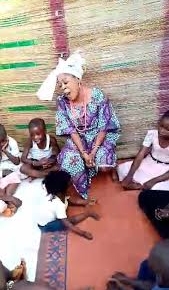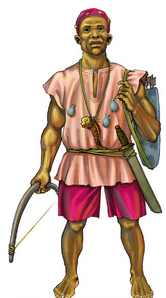
support@yorubalibrary.com
+2348073529208, 07038599574

Yoruba traditional storytelling is a rich and immersive cultural practice that has been used for generations to pass down history, morals, and wisdom. The art of storytelling in Yoruba culture is more than just entertainment; it is a means of education and cultural preservation. This article explores the techniques used in Yoruba traditional storytelling, highlighting their unique features and significance.
The Role of the Storyteller
In Yoruba culture, the storyteller, known as "Apalo" plays a crucial role. The storyteller is a respected figure who possesses a deep knowledge of folklore, history, and proverbs. Their ability to captivate an audience and impart lessons through stories is highly valued.
Use of Proverbs
Proverbs, or "Owe," are integral to Yoruba storytelling. They are succinct, wise sayings that convey deeper meanings and lessons.
Proverbs add layers of meaning to stories, making them more impactful and thought-provoking. They also serve as a way to encapsulate complex ideas in a memorable and accessible form.
Call-and-Response Interaction
A hallmark of Yoruba storytelling is the call-and-response technique, which engages the audience and makes the storytelling session interactive.
Technique: The storyteller often begins with a phrase like "Alo o" (Story!), and the audience responds with "Alo" (Story!).
Significance: This interaction fosters a sense of community and participation, making the audience an active part of the storytelling process. It also helps in keeping the audience attentive and involved.
Use of Songs and Chants
Songs and chants, or "Orin" and "Iwure," are commonly woven into Yoruba stories. These musical elements enhance the narrative and add emotional depth.
Example: A story about a hunter might include a hunting song to set the scene and convey the hunter's spirit and determination.
Significance: Songs and chants help in emphasizing key moments in the story, making them more memorable. They also reflect the cultural practices and traditions associated with the story's theme.
Incorporation of Dance and Gestures
Dance, or "Ìjò", is often used to dramatize the story and bring it to life.
Technique: The storyteller may use body movements and facial expressions to depict characters and actions, creating a vivid and dynamic presentation.
Significance: This technique adds a visual dimension to the storytelling, making it more engaging and entertaining. It also helps in conveying emotions and actions more effectively.
Moral Lessons and Ethical Teachings
Yoruba stories, or "Àlò", often carry moral lessons and ethical teachings that are intended to educate and guide the audience.
Example: A story about a greedy character might end with a lesson about the consequences of greed and the importance of generosity.
Significance: These moral lessons are a key component of Yoruba storytelling, reflecting the community's values and guiding principles. They serve to instill virtues and encourage positive behavior.
Use of Repetition
Repetition is a common technique in Yoruba storytelling, used to reinforce important points and enhance the story's rhythm and flow.
Technique: Key phrases, actions, or events may be repeated throughout the story to emphasize their significance.
Significance: Repetition aids in memorization and helps the audience to remember the story and its lessons. It also creates a rhythmic pattern that can make the story more enjoyable and engaging.
Conclusion
Yoruba traditional storytelling is a multifaceted art form that combines proverbs, call-and-response interactions, songs, dance, moral lessons, and repetition. These techniques not only enhance the storytelling experience but also serve to preserve and transmit the rich cultural heritage of the Yoruba people. By understanding and appreciating these techniques, we can gain deeper insights into Yoruba culture and the timeless wisdom embedded in its stories.

Learn about the Yoruba concept of Ìwà Pẹ̀lẹ́ (good…

Learn special praises for Divine Being and Creator…